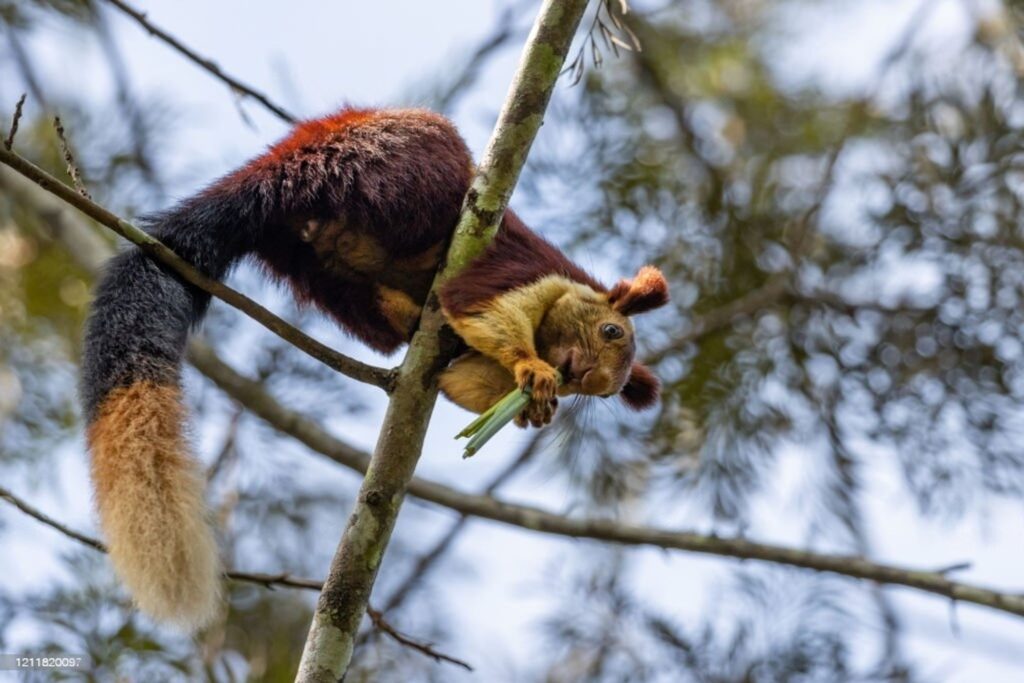Mera Naam Malabar

Why are so many things in nature named after the Malabar region? Read to find out more.


Malabar Neem, Malabar Grey Hornbill, Malabar Giant Squirrel, Malabar Parotta….oh, no wait, the last one is different. But, you see my point, don’t you?
There are loads of living things that have a Malabari first name!
When I was first training to be a nature guide in Karnataka, this question would pop up in my mind often. Why in the world is everything named after Malabar? It must truly be the Amazon forest of India or something. Let’s find out why.
What is it and where is it?


The term ‘Malabar’ is actually used to refer to a geographical region of India. It is located in the southwestern coast of India, specifically the coastal plain bounded by the Western Ghats mountain range in the east and the Arabian Sea in the west. The region includes the state of Kerala and some parts of Tamil Nadu and Karnataka. The term is believed to be derived from the Malayalam language, which is spoken in the region.
We cannot speak about Malabar without also mentioning the Western Ghats. In the first map, you can see, that the Western Ghats range from Gujarat in the north, down to Kerala in the South. It comprises of the Malabar region as well, but extends beyond it. This region is a globally recognized biodiversity hotspot present in India. It is home to a large number of species, many of which are found nowhere else in the world, that is, they are endemic to the Western Ghats.
What is the cause of high biodiversity?

In the Malabar region, the high biodiversity can be attributed to several factors such as its location, climate, and topography. The region lies in a transitional zone between the Western Ghats mountain range and the Arabian Sea, which creates a diverse range of ecosystems including tropical forests, wetlands, mangroves, and estuaries. The mountains act as a barrier to moisture-laden winds from the Arabian Sea, creating a high rainfall zone that supports lush forests, grasslands, and numerous streams and rivers. So, you see, we really can draw parallels between the rainforests of the world and the Malabar region.
The same is the case with Western Ghats as a whole. It has an even wider variety of ecosystems. ‘The Western Ghats include a diversity of ecosystems ranging from tropical wet evergreen forests to montane grasslands containing numerous medicinal plants and important genetic resources such as the wild relatives of grains, fruit and spices. They also include the unique shola ecosystem which consists of montane grasslands interspersed with evergreen forest patches.
- WWF India
According to the latest estimates, there are more than 7,400 species of plants, 500 species of birds, 179 species of amphibians, 156 species of reptiles, 139 species of mammals, and thousands of species of insects and other invertebrates found in the Western Ghats.
Disclaimer : These numbers are constantly being updated as new species are discovered and described by scientists.
Malabar Stars
You’re thinking of visiting the wonderful Malabar soon? Oh, great! Then, these are some wonderful creatures that you should watch out for. Each one brings amazing colour and magic to the ecosystem, not to mention they have their own stories. Perhaps with time I will update the blog with more detailed stories.
The Malabar Giant Squirrel

The Malabar giant squirrel, also known as the Indian giant squirrel, is a large, colourful tree-dwelling rodent found only in the Western Ghats. It is considered to be one of the largest squirrels in the world, with a body length of up to 36 cm and a weight of up to 1.5 kg. The Malabar giant squirrel is known for its striking and vibrant fur, which can be a variety of colors, including shades of orange, maroon, and purple. Its long bushy tail, which can be as long as its body, is also multi-colored and provides balance and stability as it moves through the trees. The Malabar giant squirrel is arboreal, spending most of its life high up in the trees of the forest canopy. It is an agile and nimble climber, using its sharp claws to grip onto tree trunks and branches as it leaps and bounds between them. It is also an herbivore, feeding on a diet of fruits, nuts, and seeds.
Malabar Pied Hornbill

The Malabar Pied Hornbill (Anthracoceros coronatus) is a large bird belonging to the hornbill family, which is found in the Indian subcontinent. It has a distinctive appearance, with a black body and a white belly, along with a large and curved yellow bill that has a black base. It is a resident bird that is primarily found in the Western Ghats of India, which is a biodiversity hotspot. It is also found in Sri Lanka, where it is known as the Indian Pied Hornbill.
Malabar Grey Hornbill

The Malabar Gray Hornbill (Ocyceros griseus) is a large bird belonging to the hornbill family, which is found in the Indian subcontinent. The Malabar Gray Hornbill has a distinctive appearance, with a gray body, a black head, and a large, curved yellow bill with a black tip.
I have special memories of this bird from the time I worked at Sharavathi Adventure Camp near Jog Falls. We would spot this bird often, sitting just outside the tree by the camp entrance. It’s always so refreshing to see a grand bird first thing in the morning.
When I would go running with my colleague, the bird would sound out its call. Its call sounds like a cackling, mocking laughter, as if it is laughing at our pitiful attempts to run in the morning. Haha.
Malabar Nut

The Malabar Nut is a medicinal plant native to South Asia and Southeast Asia. It is also known by other names such as Adulsa, Vasaka, and Adhatoda. The plant has been used in traditional medicine for centuries, and its leaves and roots are known for their therapeutic properties. The leaves and roots of the Malabar Nut plant are used in traditional medicine to treat respiratory ailments such as asthma, bronchitis, and coughs.
Malabar Tamarind

Malabar tamarind (Garcinia cambogia) It is a small, greenish-yellow fruit that resembles a small pumpkin and has a sour taste. The Malabar tamarind is commonly used in cooking in the regions where it is grown. The fruit is used to add a sour and tangy flavor to dishes, and it is often used in curries, chutneys, and pickles. In addition to its culinary uses, the Malabar tamarind is also used in traditional medicine to treat a range of ailments, including constipation, diarrhea, and menstrual problems.
There are certainly more species that have a Malabar origin. I haven’t even touched the amphibians and reptiles yet! Watch out for future posts. Do you have any personal favourites apart from the ones listed here? Let me know in the comments.
All images taken from iStock.
To get updates about nature resources and future walks, just plug in to our social media channels :
Naturenika
https://www.instagram.com/naturenika/https://www.facebook.com/Naturenika
The Naturalist School
https://www.instagram.com/naturalist.school/https://www.facebook.com/naturalistsch



